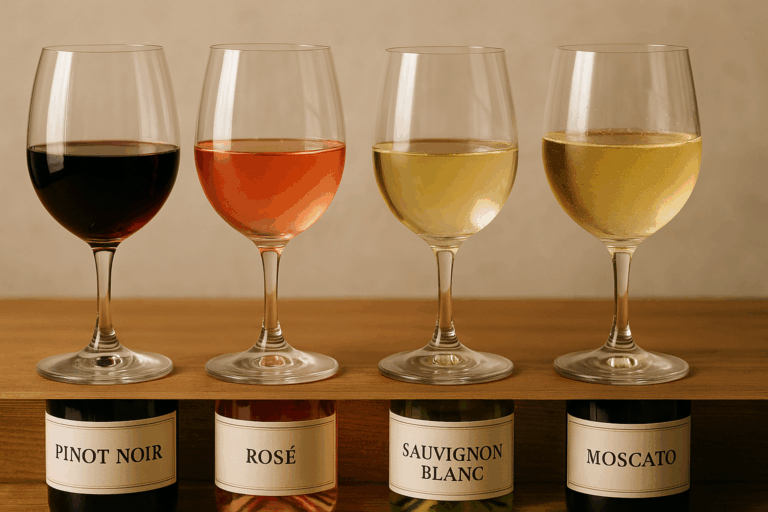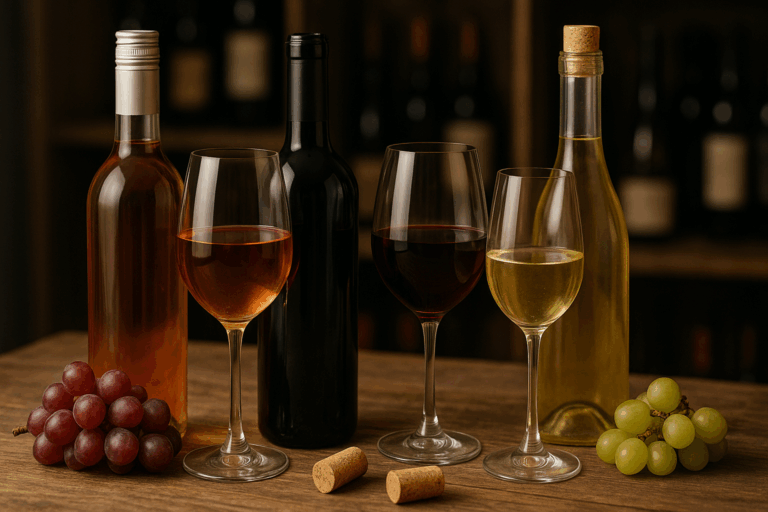Wine Myths Debunked: What’s True and What’s Not
Wine has been around for thousands of years, and with it, countless myths, assumptions, and outdated “rules” have taken root. Whether it’s the belief that older wine is always better or that red wine must be served at room temperature, these misconceptions can confuse beginners and intimidate casual drinkers.
Let’s set the record straight. Here are some of the most common wine myths — and the real facts behind them.
Myth #1: Older Wine Is Always Better
Truth: Most wines are meant to be consumed young.
Only about 5–10% of wines on the market improve with long-term aging. Wines made for aging tend to be expensive and come from specific regions or grape varieties. Most everyday wines are crafted to taste best within a year or two of bottling.
How to know if a wine should age:
- Tannic structure (reds like Cabernet or Nebbiolo)
- High acidity (certain whites like Riesling or Champagne)
- Proven aging history (from regions like Bordeaux or Barolo)
If the wine wasn’t expensive and doesn’t say “cellar-worthy,” don’t wait — enjoy it now.
Myth #2: Red Wine Must Be Served at Room Temperature
Truth: Room temperature today is too warm.
The “room temperature” rule came from medieval Europe, when indoor temps were cooler (around 60–65°F / 15–18°C). Today’s homes are often warmer, which can make reds taste flat or overly alcoholic.
Correct serving temperatures:
- Light reds (Pinot Noir): 55–60°F (13–16°C)
- Full-bodied reds (Cabernet, Syrah): 60–65°F (16–18°C)
- Whites: 45–55°F (7–13°C)
- Sparkling: 40–50°F (4–10°C)
You can even chill red wine slightly — 15 minutes in the fridge does wonders.
Myth #3: White Wine with Fish, Red Wine with Meat — Always
Truth: It depends more on the preparation than the protein.
While this classic rule sometimes works, it’s too simplistic. The sauce, spices, and cooking method can change everything.
Better rule: Match intensity with intensity
- Grilled salmon with a bold red (Pinot Noir)? Yes.
- Lemon chicken with a crisp white (Sauvignon Blanc)? Perfect.
- Red meat with pepper sauce? Try a Syrah.
- Steak tartare? Sparkling wine works too!
Focus on flavor profiles, not just color.
Myth #4: Expensive Wine Always Tastes Better
Truth: Price doesn’t equal taste — especially for beginners.
Many blind tastings have shown that people often prefer mid-range wines to expensive ones. Price includes things like branding, scarcity, and aging potential — not necessarily flavor.
You can find amazing wines between $10–20 that suit your taste perfectly.
What matters most: personal preference, not price tag.
Myth #5: Screw Caps Mean Cheap Wine
Truth: Screw caps preserve freshness — and quality.
While associated with cheap wine in the past, modern screw caps are now used by high-quality producers worldwide, especially in Australia, New Zealand, and the U.S.
They offer excellent protection against cork taint and are ideal for wines meant to be drunk young.
Don’t judge the closure — judge the contents.
Myth #6: Wine Should Always Breathe
Truth: Not every wine benefits from air.
Decanting or letting a wine “breathe” helps open up certain wines — mainly young reds with lots of tannins or older wines with sediment.
But many wines, especially whites and light reds, don’t need air time and may actually lose delicate aromas if left out too long.
When in doubt: taste it first. If it tastes tight or closed, give it some air.
Myth #7: All Rosé Wines Are Sweet
Truth: Most rosés are dry.
Rosé gets its pink color from brief contact with red grape skins, not from adding sugar or red wine. Styles vary by region, but many European rosés (like those from Provence) are bone dry.
If you want a sweeter rosé, check the label or try one from California or Spain marked “off-dry” or “semi-sweet.”
Myth #8: Wine Is Only for Fancy Occasions
Truth: Wine is for everyday enjoyment.
You don’t need a special event, gourmet meal, or a decanter to enjoy wine. Wine pairs just as well with pizza, popcorn, or tacos as it does with steak or cheese plates.
Drinking wine is about pleasure, not performance.
Myth #9: Red Wine Causes Headaches Because of Sulfites
Truth: It’s probably not the sulfites.
Sulfites are present in almost all wines, but they’re also in dried fruits, canned soup, and juice — in higher quantities. Most people aren’t allergic to them.
Headaches are more likely caused by histamines, tannins, alcohol, or dehydration. If you’re sensitive, drink in moderation and stay hydrated.
Myth #10: You Have to Know a Lot About Wine to Enjoy It
Truth: You only need to know what you like.
The wine world can feel elitist, but it shouldn’t be. You don’t need to memorize grape varieties or pronounce “Gewürztraminer” perfectly to enjoy a glass.
The best wine is the one that brings you joy — whether it’s $12 from the grocery store or a vintage bottle from Burgundy.






